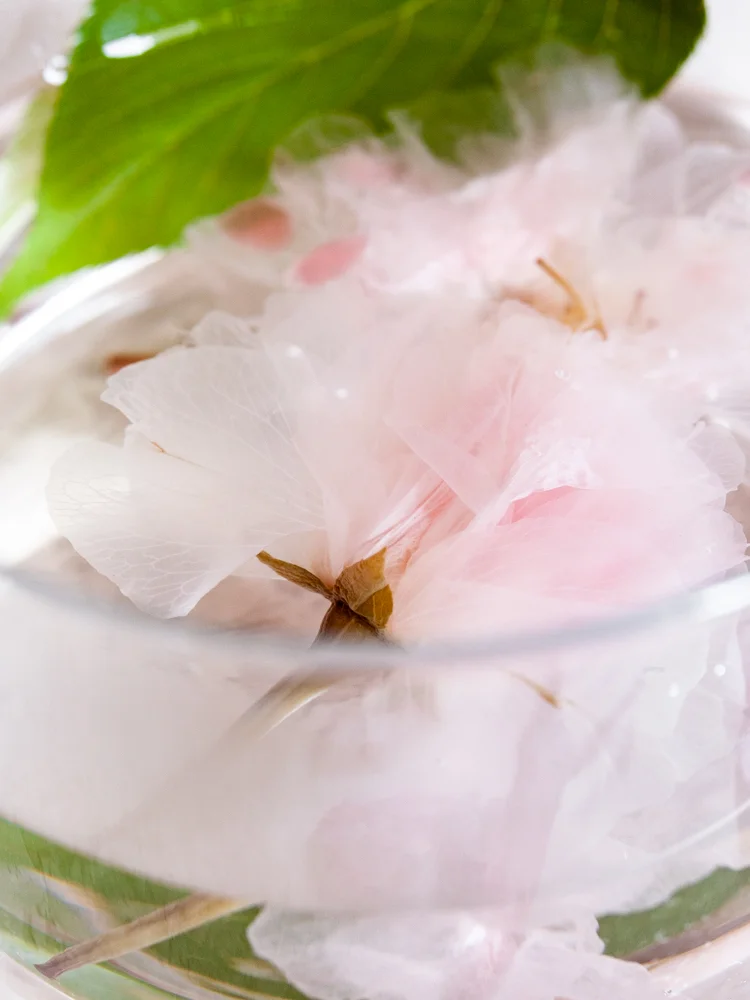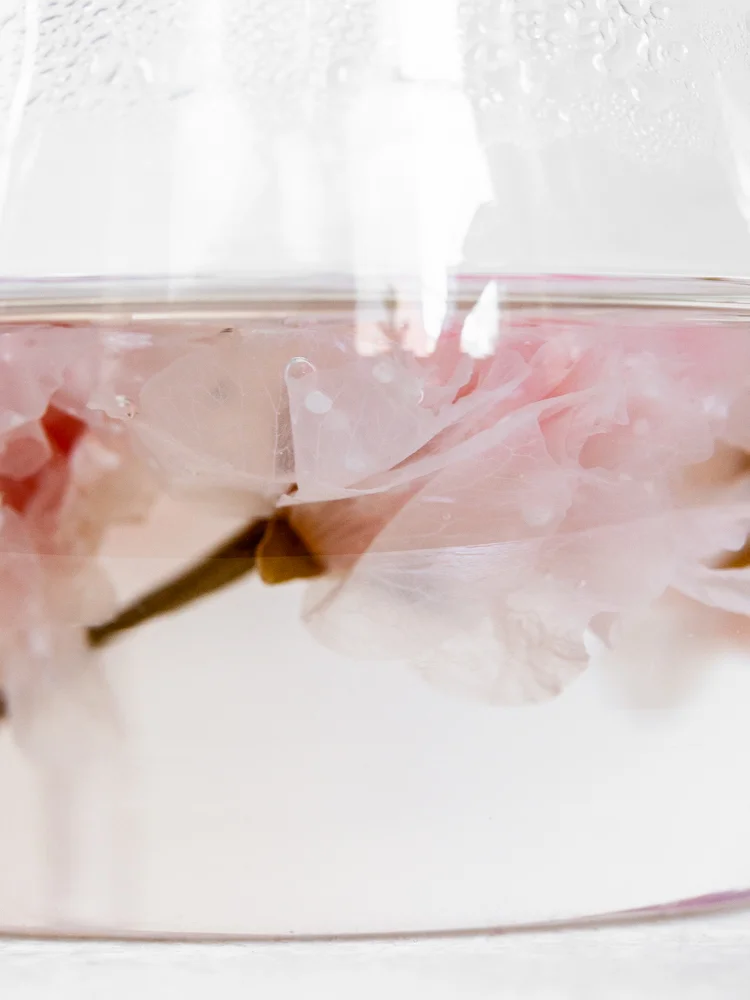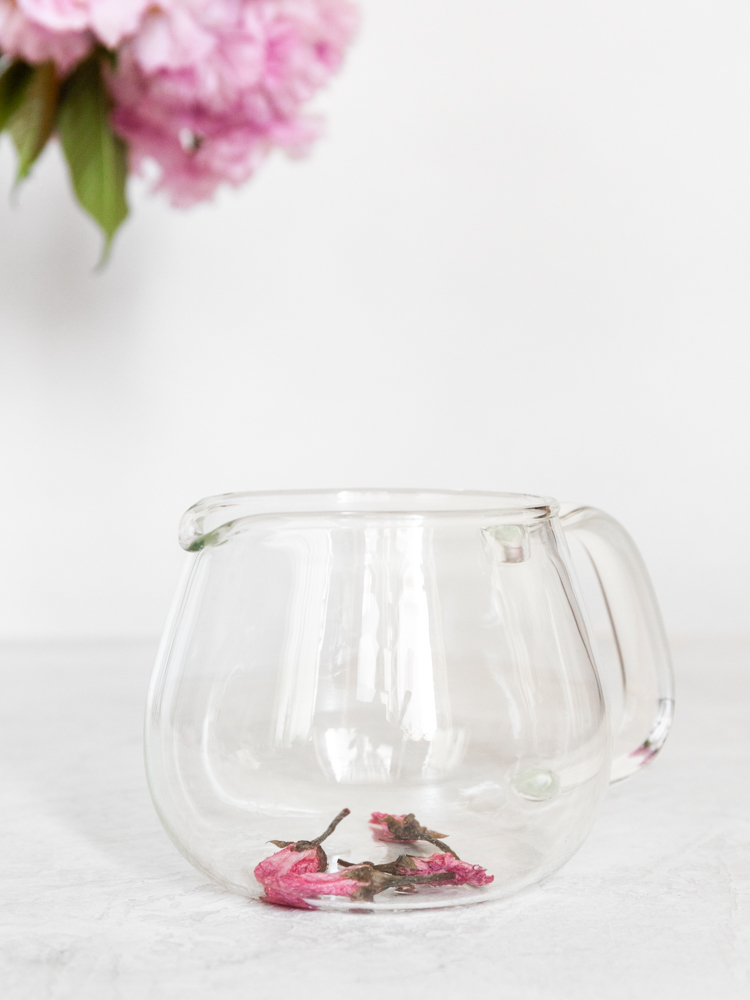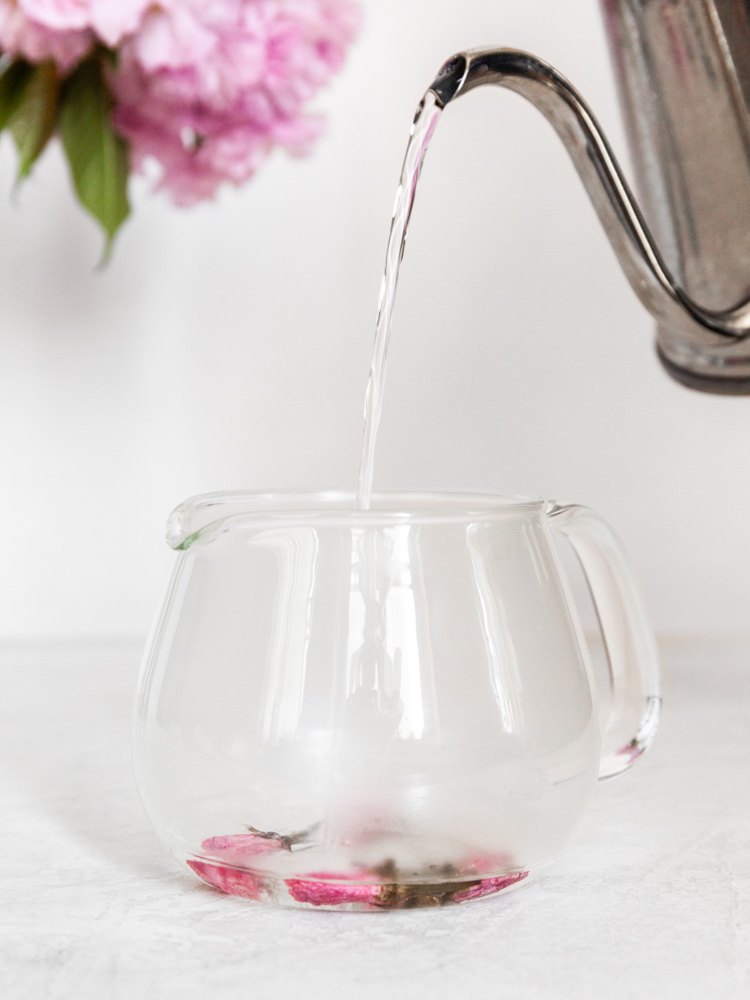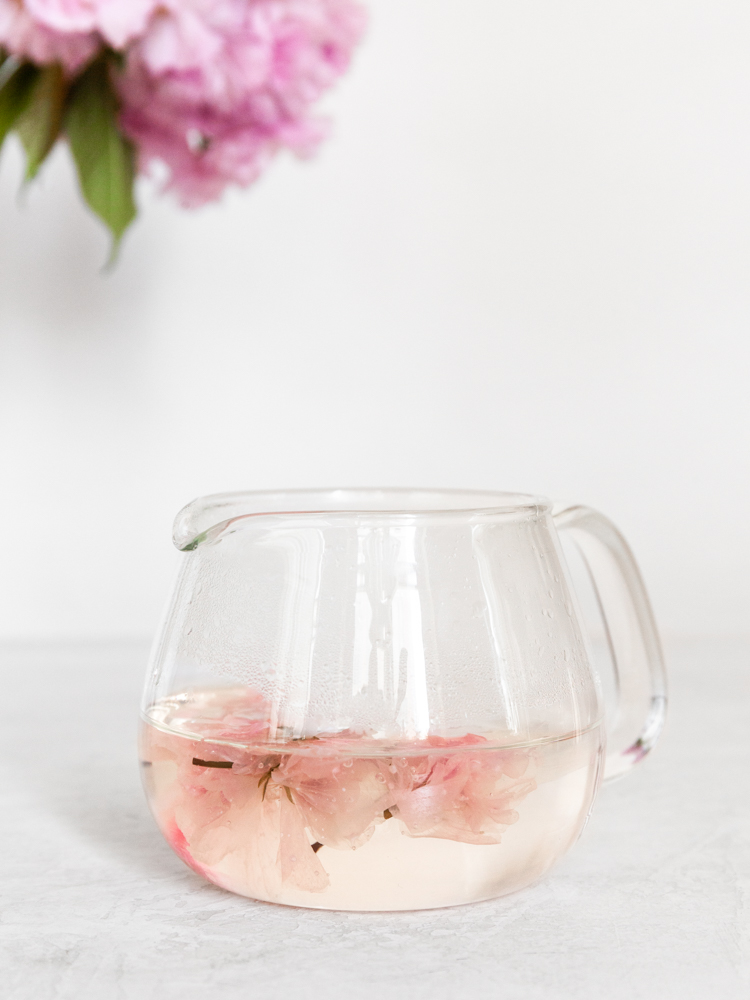Savor Spring: How to Make Preserved Cherry Blossom Tea
Like ripe morels, pungent ramps, and tender fiddlehead ferns, cherry blossoms (sakura) are one of spring’s fleeting culinary pleasures. These fluffy and irresistibly pink blossoms are a harbinger of warmer days and their appearance on plates and snacks throughout Japan is a national obsession. During early spring, the entire tree is celebrated from its wood and bark (which is used as lumber or boiled to create a type of medicine or dye) to its leaves and flowers which are edible and are used in many seasonal dishes.
“These fluffy and irresistibly pink blossoms are a harbinger of warmer days...”
In addition to their beautiful color, cherry blossoms have a delicate flavor and a slightly fruity fragrance that makes them ideal for adding a pop of color and complexity to treats. Some popular examples of sakura snacks include sakuramochi (which utilizes the leaves of the sakura tree), sakura yokan, sakura onigiri, sakura gohan, and a number of different wagashi.
Now, we feel the need to add a disclaimer that though cherry blossoms possess a unique flavor, it is not necessarily that of cherries. When prepared for consumption, cherry blossoms are most often pickled with salt and vinegar and as a result, have a distinctly salty flavor. This is especially true for sakurayu or cherry blossom tea.
Brewing sakurayu is a fantastic experience for any tea lover. The preserved cherry blossoms open up their feathery petals and bloom like a ballerina’s tutu when covered with hot water. The resulting cup is rosy in color, lightly fragranced, and a touch salty and is unlike any other herbal tea.
Commercially produced cherry blossoms (okazuke) are available, but it’s quite easy to make your own! If you have access to a flowering cherry blossom tree and would like to stretch out that early spring feeling, follow along with our recipe below.
Preserving Cherry Blossoms
Ingredients:
2 Cups of young sakura (cherry blossom) flowers
There are hundreds of varieties of cherry blossoms. If possible, look for a tree of the yaezakura variety. These trees bloom later in the season and have flowers that are layered, large, and wonderfully pink.
6 tbsp kosher or pickling salt
¾ cup Ume plum (umeboshi) vinegar - If you cannot find this, you can try substituting it with red wine or apple cider vinegar
Instructions:
Find a tree that is okay to harvest flowers from. Be absolutely sure that it has not been chemically sprayed or contaminated.
Carefully harvest the flower just before full bloom (this is when their flavor is strongest) by cutting them so a bit of the stem remains attached.
Wash the flowers thoroughly, drain, and carefully dry with paper towels or a salad spinner.
Very gently massage the kosher salt into the flowers.
Arrange the salted blossoms in a shallow vessel or pickling crock (if you have one). Add a weight on top and allow the flowers to cure for two days. The salt and weight will remove fragrant liquid from the blossoms.
Remove the liquid and shake off excess salt before covering them with the ume vinegar. Put the weight back on top and allow it to rest submerged for 3 days in a cool place.
Drain the flowers through a sieve and remove all of the vinegar. Arrange them in a single layer on a paper towel.
Sprinkle with salt and allow them to thoroughly dry (about 2 days) before storing them in an airtight container. They will keep for up to a year.
Brewing sakurayu
Add approximately 3 or 4 of your preserved cherry blossoms to a small teapot.
Pour hot water (just less than a boil) over the flowers and allow them to unfurl for approximately 30 seconds.
Carefully remove the flowers and add them to a separate teacup and cover again with hot water.
Use the water from the first cup to help control the level of saltiness to your liking.
You can experiment with blending in other herbal teas like rosehip or hibiscus. Also, if you’d like to make a slightly sweeter cup, a dash of cranberry or pomegranate juice can be used.
WORDS BY SAM GEAN


